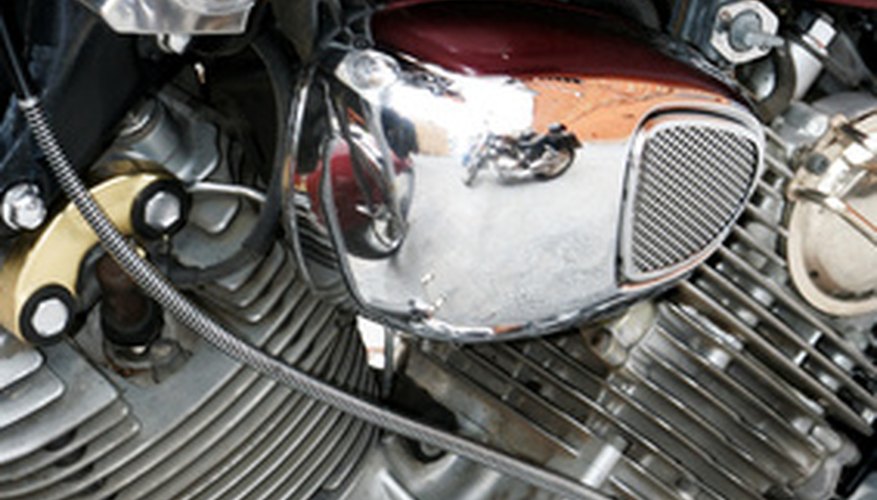The alternator, commonly referred to as the stator or generator, is an integral part of a motorcycle's charging system. It is the alternator's duty to provide a steady flow of electrical current to recharge the motorcycle's battery. When the alternator fails, the motorcycle's ignition and lighting systems must rely solely on the battery, which will discharge within a short time of operation. The steps to replace can be applied to most motorcycles. However, since alternator locations and other small details may differ between different motorcycles, it is recommended to refer to a factory service manual specific to your machine.
- The alternator, commonly referred to as the stator or generator, is an integral part of a motorcycle's charging system.
- When the alternator fails, the motorcycle's ignition and lighting systems must rely solely on the battery, which will discharge within a short time of operation.
Locate the alternator cover on your motorcycle. In general, most motorcycle's place the alternator on the left side of the motor, although some cruiser and touring models have their alternators on the right side. Remove any body or exhaust components from the motorcycle to gain access to the motor's alternator cover. Place a drain pan under the motor and remove the motor's oil drain plug using a socket wrench. Allow the oil to drain completely and reinstall the drain plug. Move the drain pan below the alternator cover.
Locate the alternator's wiring harness and disconnect it from the motorcycle's wiring harness. Remove the bolts from the perimeter of the alternator cover using a socket wrench. Pull the cover away from the motor and allow any remaining oil to drain into the drain pan. Remove the alternator cover's gasket and discard it.
- Locate the alternator's wiring harness and disconnect it from the motorcycle's wiring harness.
- Remove the bolts from the perimeter of the alternator cover using a socket wrench.
Flip the alternator cover over. Using an Allen key, remove the bolts that secure the alternator's magnetic stator to the alternator cover. Pull the stator out of the cover. Insert the new stator into the cover and secure it in place using an Allen key to tighten the mounting bolts. Place a new gasket over the alternator cover.
Locate the alternator's flywheel rotor on the exposed crankshaft. Using a socket wrench, remove the flywheel rotor's mounting bolt and pull the flywheel rotor off of the crankshaft. Install a new flywheel rotor onto the crankshaft and tighten the mounting bolt with a socket wrench.
Place the alternator cover over the flywheel rotor and onto the motor. Loosely screw the alternator cover's bolts into place with an Allen key until all bolts are seated lightly against the alternator cover. Tighten the bolts completely, alternating between bolts in a criss-cross pattern. Plug the alternator into the motorcycle's wiring harness.
- Locate the alternator's flywheel rotor on the exposed crankshaft.
- Place the alternator cover over the flywheel rotor and onto the motor.
Remove the motor's oil filler cap and insert a funnel into the oil filler. Pour fresh motor oil into the oil filler and remove the funnel. Reinsert the oil filler cap. Wipe away any traces of oil from the oil filler, alternator cover and oil drain plug with a clean shop towel. Reinstall any body or exhaust components removed in Step 1.
TIP
Place the motorcycle on a lift or stand for additional stability and improved access to the generator. Refer to a factory service manual specific to your motorcycle for detailed installation and torque information, as well as motor oil capacities.
WARNING
Disconnect the battery from the motorcycle's wiring harness before beginning to prevent the risk of electrical shocks or shorts. Carefully inspect the generator flywheel's mounting bolt before removing it. Some generator flywheels are secured to the crankshaft using a left-hand threaded bolt, typically signified by the letters "LH" imprinted onto the bolt's head.
